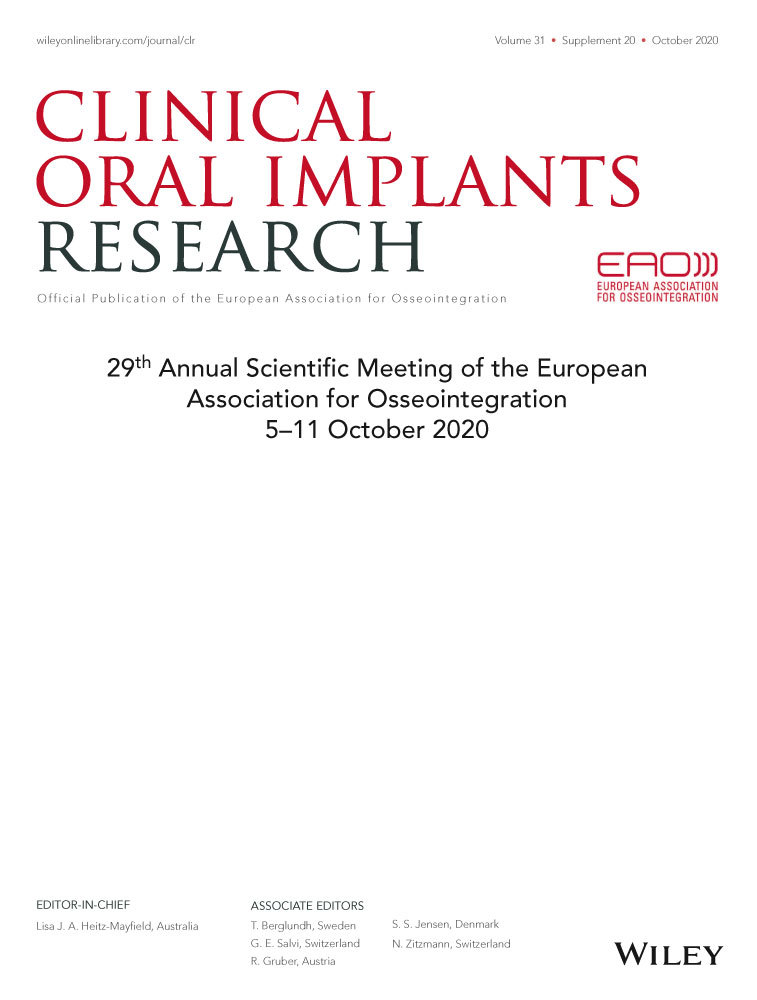Evaluation the effect of surface chemistry modification on titanium dental implants related to osteoclastic activity
CZ660 ePOSTER BASIC RESEARCH
Background: Dental implants are widely used to treat edentulous patients. Osseointegration around implant surface is achieved by bone remodeling related with serial activity of bone forming and bone resorbing cells. Increasing hydrophilicity of implant surfaces using biomimetic deposition has been known to improve osteoblastic responses. The hypothesis of this research is that calcium phosphate deposition onto titanium dental implant using surface chemistry modification decrease activity of osteoclasts.
Aim/Hypothesis: The aim of this study is to research osteoclast differentiation activity and to assess some significant markers for osteoclastogenesis in messenger RNA and protein level on titanium surfaces using surface chemistry modification.
Materials and Methods: Several titanium discs with different surface were made and precipitated in modified simulated body fluid under physiological conditions at normal human body temperature for 14 days. One pre-differentiated cell (murine macrophage cell) is prepared. To evaluate the activities of osteoclast differentiation, the method using cytochemical marker (Tartrate-resistant acid phosphatase) of the cells was performed. In addition, two techniques used in cell and molecular biology were performed to investigate messenger RNA and protein expression levels of several transcription factors, which are important in activities of osteoclasts. Cell distribution and differentiation patterns on the dental implant surface were evaluated using electron microscopy.
Results: The cytochemical marker's (Tartrate-resistant acid phosphatase) activity increases with the degree of bone resorbing cell differentiation. The decrease in the marker's activity was reduced to a statistically significant level in the disc precipitated on the 14th compared to the disc precipitated on the 7th. At the results of electron microscopy imaging, the number of differentiate cells is very a few on both implant surfaces under surface chemistry modification.
The biomimetic deposition using surface chemistry modification has the effect of inhibiting the generation of bone resorbing cells on the surface of anodized titanium, and this anti-osteoclast effect is clinically beneficial to the formation of bone around the implant.
Conclusions and Clinical Implications: This research concludes that activities of bone resorbing cell on anodized titanium surfaces was decreased by biomimetic deposition using surface chemistry modification. Therefore, high surface energy on implant surfaces could be helpful for osseointegration around implant fixture.
Keywords: Biomimetic deposition, Surface chemistry modification, Osteoclastogenesis, Titanium surface




